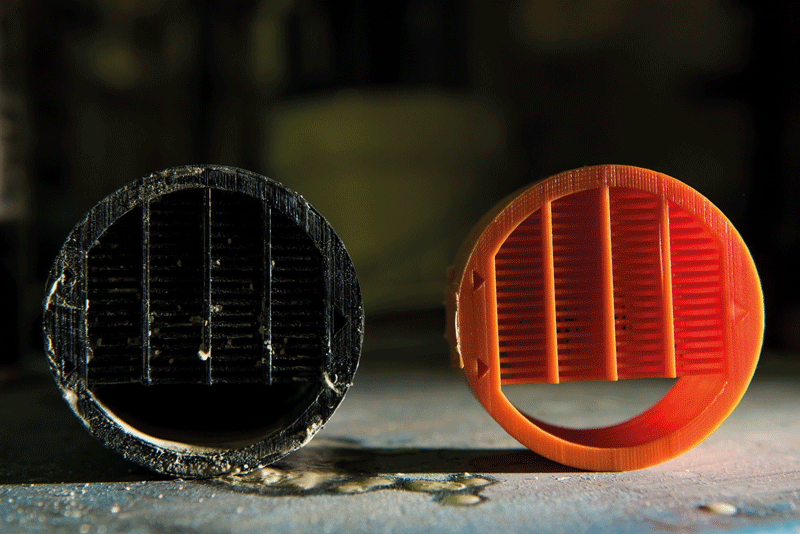Controlling the flow – cleaning up radioactive waste
Novel particle separation technology could make the clean-up of legacy radioactive waste faster and cheaper, claim researchers in the USA.

They propose the technology can separate particles by size, working quickly and at industrial scale.
The system, developed at Pacific Northwest National Laboratory (PNNL), USA, resembles a series of hollow hockey pucks filled with rows of individual posts. Each row of descending posts is slightly offset from the row above.
With the fluid stream moving at speeds of up to around 409L/min, the posts create unique flow fields that cause larger particles to move in the desired direction. ‘Express lanes’ within the system then remove larger particles.
In a full-scale system, multiple sets of pucks with different post designs will guide particles to their own ‘express lane’, separating relatively large pieces of about 1cm down to 20μm.
Initially, the team thought they would have to stick with slow laminar flow to keep the particles in the correct lanes, but they have managed to design a vertical pipe to overcome turbulent (fast) flow issues – most of the larger particles are not bouncing off the posts, but are being driven by flow streams created by the posts.
Compared to conventional separation technologies – often around 25m in diameter – Leonard Pease, Chemical Engineer at PNNL, says the technology is ‘roughly three inches [7.62cm] in diameter and several feet long’.
The approach may have broad industrial uses, including in food processing, advanced manufacturing, aerosol science, supercritical fluids, oil and gas, and environmental waste processing.
Pease explains, ‘Using geothermal energy as an example, imagine you’re characterising a site for geothermal potential, and you’re sending water below ground to explore how the rock responds.
‘That process generates wastewater filled with rock pieces. Companies need a way to clean that water before it can be reused elsewhere. Our technology could serve that purpose.
‘It isn’t a single-point panacea, however. Given the nature of the material you’re working with, its underlying chemistry may warrant changes in the separation process. Our technology could be one important part of that process.’
Pease says they have used an array of posts and pins to develop the technology. ‘Most recently we have used plastic and the components are 3D printed. The nature of the material being separated may dictate that we use different materials for our system. For nuclear waste, we would definitely use metal for those pins and posts.’
In testing of simulated waste – in this case, buckets of granular oxides mixed with water into a slurry – the newly developed separation technology quickly and successfully separated larger particles from smaller ones at various scales with several different solid-liquid mixtures.
The bench-scale demonstration maintains 94% flow over seven hours with no work stoppage from clogging. Further, the tests work at a rate of around 409L/min through a 7.62cm pipe, which could be an optimal flow for industrial operations.
The researchers aim to work with higher concentrations of material and try different particle types.
Pease closes, ‘The device has been patented. We’re continuing to engage with companies who want to work with us. We recently secured funding to pursue wastewater treatment, where we will pull particles out of petroleum wastewater.’

